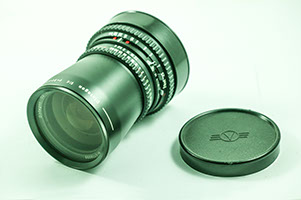


Comparison of V-series lens coupling to the camera of 250 mm /5.6 lens above, and their latest version 110 mm f/2 FE lens (left) with both mechanical, and electronics contacts with the body. The mechanical coupling (at 6 o'clock) couples the charging operation in the camera with the lens, and orchestrates the firing sequence so the diaphragm closes down while the mirror goes up before firing of the shutter. The electronics contacts (9 o'clock) give aperture information to the electronics meter circuitry inside the camera.

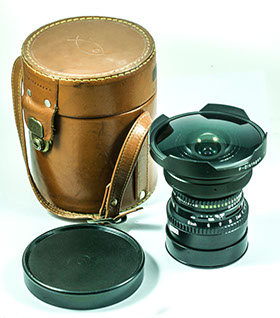
Classic V-Series Lenses
Zeiss F-Distagon, 30 mm f/5.6
Zeiss Distagon, 40 mm f/4
Zeiss Distagon, 50 mm f/4
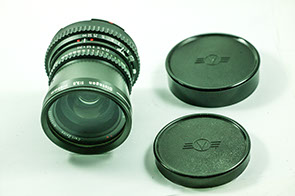
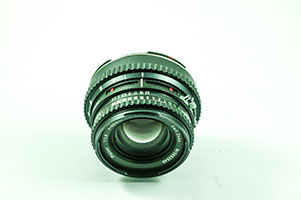

Zeiss Distagon, 50 mm f/3.5
Zeiss Planar, 80 mm f/2.8
Zeiss Planar, 100 mm f/3.5

Zeiss S-Plannar 120 mm f/5.6
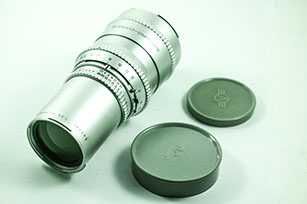
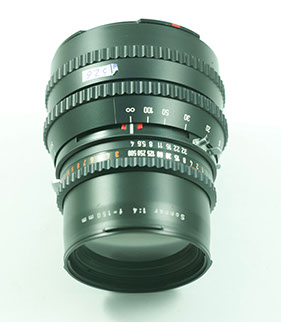
Zeiss Sonnar 150 mm f/4

Zeiss Sonnar 250 mm f/5.6

Zeiss Sonnar 250 mm f/5.6 non-T-star
250 mm f/5.6 Sonnar Superachromat



Zeiss Tele-Tessar 350 mm f/5.6
Zeiss Tele-Tessar 500 mm f/8
Schneider Variogon 140-280 f/5.6



Zeiss S-Planar 135 mm f/5.6 macro lens
Auto extension bellows
Extension bellows with film duplicator


Rear Elements
Frontal Elements


Shutter
Unit
Hasselblad 80 mm f/2.8 CB lens is disassembled to reach its shutter mechanism (right). The leaf shutter in Hasselblad lenses have a mechanical link to the body to orchestrate timing between the internal body shutter, and the shutter inside the camera.